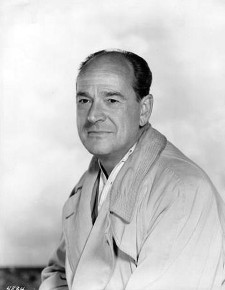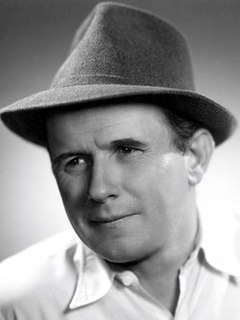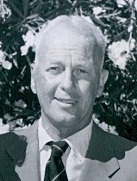Related Research Articles

Citizen Kane is a 1941 American drama film produced by, directed by, and starring Orson Welles. He also co-wrote the screenplay with Herman J. Mankiewicz. The picture was Welles' first feature film. Citizen Kane is widely regarded as the greatest film ever made. For 50 consecutive years, it stood at number 1 in the British Film Institute's Sight & Sound decennial poll of critics, and it topped the American Film Institute's 100 Years ... 100 Movies list in 1998, as well as its 2007 update. The film was nominated for Academy Awards in nine categories and it won for Best Writing by Mankiewicz and Welles. Citizen Kane is praised for Gregg Toland's cinematography, Robert Wise's editing, Bernard Herrmann's music, and its narrative structure, all of which have been considered innovative and precedent-setting.

Ginger Rogers was an American actress, dancer and singer during the Golden Age of Hollywood. She won an Academy Award for Best Actress for her starring role in Kitty Foyle (1940), and performed during the 1930s in RKO's musical films with Fred Astaire. Her career continued on stage, radio and television throughout much of the 20th century.

Bachelor Mother (1939) is an American romantic comedy film directed by Garson Kanin, and starring Ginger Rogers, David Niven, and Charles Coburn. The screenplay was written by Norman Krasna based on an Academy Award-nominated story by Felix Jackson written for the 1935 Austrian-Hungarian film Little Mother. With a plot full of mistaken identities, Bachelor Mother is a light-hearted treatment of the otherwise serious issues of child abandonment.

Joan de Beauvoir de Havilland, known professionally as Joan Fontaine, was a British-American actress who is best known for her starring roles in Hollywood films during the "Golden Age". Fontaine appeared in more than 45 films in a career that spanned five decades. She was the younger sister of actress Olivia de Havilland. Their rivalry was well-documented in the media at the height of Fontaine's career.

Edward Dmytryk was an American film director. He was known for his 1940s noir films and received an Oscar nomination for Best Director for Crossfire (1947). In 1947, he was named as one of the Hollywood Ten, a group of blacklisted film industry professionals who refused to testify to the House Un-American Activities Committee (HUAC) in their investigations during the McCarthy-era 'Red scare'. They all served time in prison for contempt of Congress. In 1951, however, Dmytryk did testify to HUAC and named individuals, including Arnold Manoff, whose careers were then destroyed for many years, in order to rehabilitate his own career. First hired again by independent producer Stanley Kramer in 1952, Dmytryk is likely best known for directing The Caine Mutiny (1954), a critical and commercial success. The second-highest-grossing film of the year, it was nominated for Best Picture and several other awards at the 1955 Oscars. Dmytryk was nominated for a Directors Guild Award for Outstanding Directorial Achievement in Motion Pictures.

The Hunchback of Notre Dame is a 1939 American romantic drama film starring Charles Laughton and Maureen O'Hara. Directed by William Dieterle and produced by Pandro S. Berman, the film is based on Victor Hugo's 1831 novel.

Anthony Mann was an American film director and stage actor, best remembered for his work in the film noir and Westerns genres. As a director, he often collaborated with the cinematographer John Alton. He directed films for a variety of production companies, from RKO to MGM, and worked with many major stars of the era. He made several Westerns with James Stewart, such as Winchester '73 (1950), and he was the director of the medieval epic El Cid (1961), working with Charlton Heston and Sophia Loren. He also directed the big-budget film Cimarron (1960), which starred Glenn Ford and Maria Schell.

The Saint Strikes Back is a 1939 American crime film directed by John Farrow. It marks the second cinematic incarnation of the antihero crimefighting character Simon Templar, alias "The Saint". George Sanders replaced Louis Hayward, who had played the Saint in The Saint in New York. The movie was produced by RKO and also featured Wendy Barrie as female gang leader Val Travers. Barrie would appear in two more Saint films, playing different roles each time, though not in the next film in the series, The Saint in London. This was the second of eight films in RKO's film series about The Saint, and the first of five with Sanders in the title role.

The Saint in London is a 1939 British crime film, the third of eight films in RKO's film series featuring the adventures of Simon Templar, alias "The Saint".

William Taylor "Tay" Garnett was an American film director and writer.

John Villiers Farrow, KGCHS was an Australian film director, producer, and screenwriter. Spending a considerable amount of his career in the United States, in 1942 he was nominated for the Academy Award for Best Director for Wake Island, and in 1957 he won the Academy Award for Best Adapted Screenplay for Around the World in Eighty Days. He had seven children by his wife, actress Maureen O'Sullivan, including actress Mia Farrow.
George Sherman was an American film director and producer of low-budget Western films. One obituary said his "credits rival in number those of anyone in the entertainment industry."

Morgan Conway was an American actor, best known for his portrayals of Dick Tracy.

RKO Radio Pictures, Inc., commonly called RKO Pictures or simply RKO, was an American film production and distribution company that was one of the "Big Five" major film studios of Hollywood's Golden Age. The business was formed after the Keith-Albee-Orpheum (KAO) theater chain and Joseph P. Kennedy's Film Booking Offices of America (FBO) studio were brought together under the control of the Radio Corporation of America (RCA) in October 1928. RCA chief David Sarnoff engineered the merger to create a market for the company's sound-on-film technology, RCA Photophone. By the mid-1940s, the studio was under the control of investor Floyd Odlum.
Trouble in Sundown is a 1939 American Western film directed by David Howard, using a screenplay by Oliver Drake, Dorrell McGowan and Stuart McGowan, based on a story by Charles F. Royal.

Almost a Gentleman is a 1939 American drama film directed by Leslie Goodwins from a screenplay by David Silverstein and Jo Pagano, based on the story by Harold Shumate. The film stars James Ellison, Helen Wood and Robert Kent. It was released by RKO Radio Pictures on March 31, 1939.
Racketeers of the Range is a 1939 American Western film directed by D. Ross Lederman from a screenplay by Oliver Drake, based on Bernard McConville's story. Produced and distributed by RKO Radio Pictures, the film was released on May 26, 1939. and stars George O'Brien, Chill Wills, and Marjorie Reynolds.

Conspiracy is a 1939 American spy drama film directed by Lew Landers, from a screenplay by Jerome Chodorov, based on the story, "Salute to Hate", by John McCarthy and Faith Thomas. The film stars Allan Lane, Linda Hayes, and Robert Barrat, and was produced and distributed by RKO Radio Pictures, who premiered the film in New York City on August 23, 1939, with a general release on September 1.

Jack Hively was an American film editor and film and television director whose career lasted from the 1930s through the 1980s. His father and his brother were also film editors. He began as a film editor, before moving on to direct features. His career was interrupted by his enlistment in the U.S. Army following the Japanese bombing of Pearl Harbor in December 1941. After the war he returned to directing films, before moving on to directing on television.
Lee Marcus, also known as Lee S. Marcus, was an American film producer of the 1930s and 1940s. During his fifteen-year career he produced over 85 films, most of them between 1934 and 1941 while he was at RKO Studios. Prior to his production career, Marcus worked for FBO and then RKO as a sales executive, reaching the level of vice president in both organizations. At RKO, he was head of production of the studio's b-films during the late 1930s and the beginning of the 1940s. He was also responsible for producing what many consider to be the first film noir, 1940's Stranger on the Third Floor.
References
- 1 2 "They Made Her a Spy: Detail View". American Film Institute. Archived from the original on March 29, 2014. Retrieved September 14, 2014.